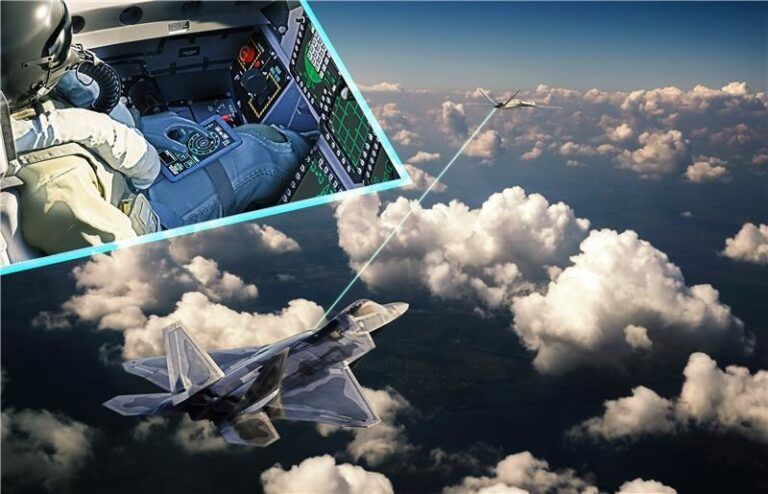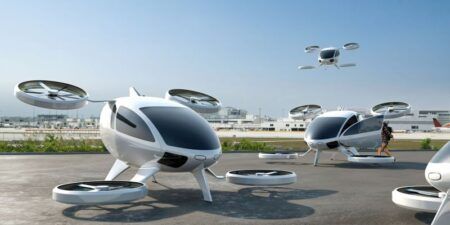The pilot of an F-22 has controlled a drone for the first time during a test flight.
The flight last month out of Nellis Air Force Base, Nevada demonstrated the use of a pilot vehicle interface (PVI) in an F-22 Raptor fighter jet, advanced tactical datalinks, software-defined radios (SDRs) and a MQ-20 drone acting as a Collaborative Combat Aircraft (CCA).
The program involved Lockheed Martin’s Skunkworks, General Atomics and L3Harris.
CCA, also known as loyal wingmen or MUM-T aircraft (Manned-Unmanned Teaming), are drones designed to accompany piloted fighter aircraft and perform hazardous operations during missions. CCA are in development around the world and are anticipated to be an integral part of future air combat missions.
OJ Sanchez, vice president and general manager, Lockheed Martin Skunk Works said, “This represents a breakthrough in air combat capability, where single-seat aircraft command and control drones with simple and intuitive interfaces in the cockpit.”
Two L3Harris SDRs were used in the test. The first was installed into the MQ‑20, and the second in the F‑22. Through the PVI tablet and the F‑22’s GRACE module, the system provided end‑to‑end communications, enabling the F‑22 command and control of the MQ‑20 in flight.
According to Lockheed Martin, the flight demonstrated human-machine teaming capabilities and alongside other evaluations are crucial steps in realizing the US Air Force’s family of systems vision.
Lockheed Martin demonstrated the F-35’s drone controlling capability, the USA’s other 5th generation fighter jet, with a series of flights late last year and early this year. It also unveiled the Vectis CCA for the F-35 in September.
The flight at the Nevada Test and Training Range is part of an ongoing series of flight test performed using internal R&D funding to demonstrate manned and unmanned teaming.





